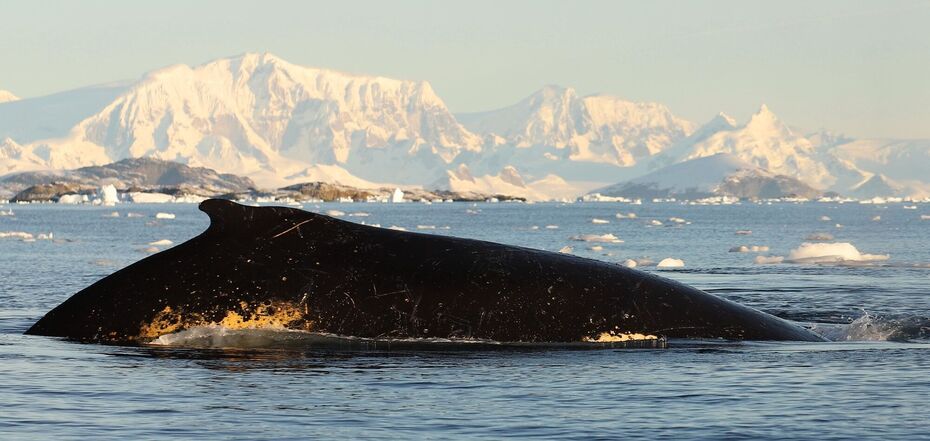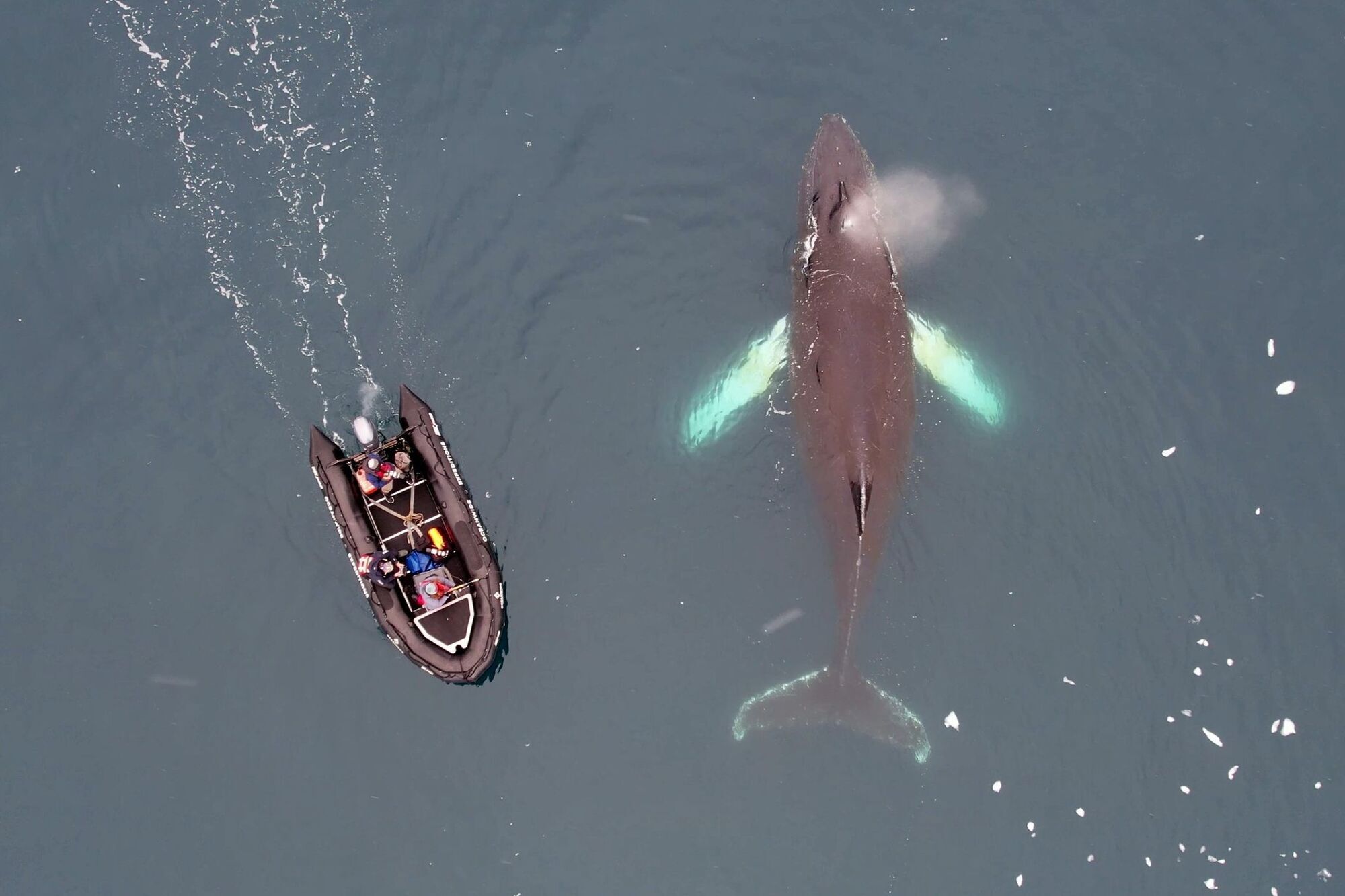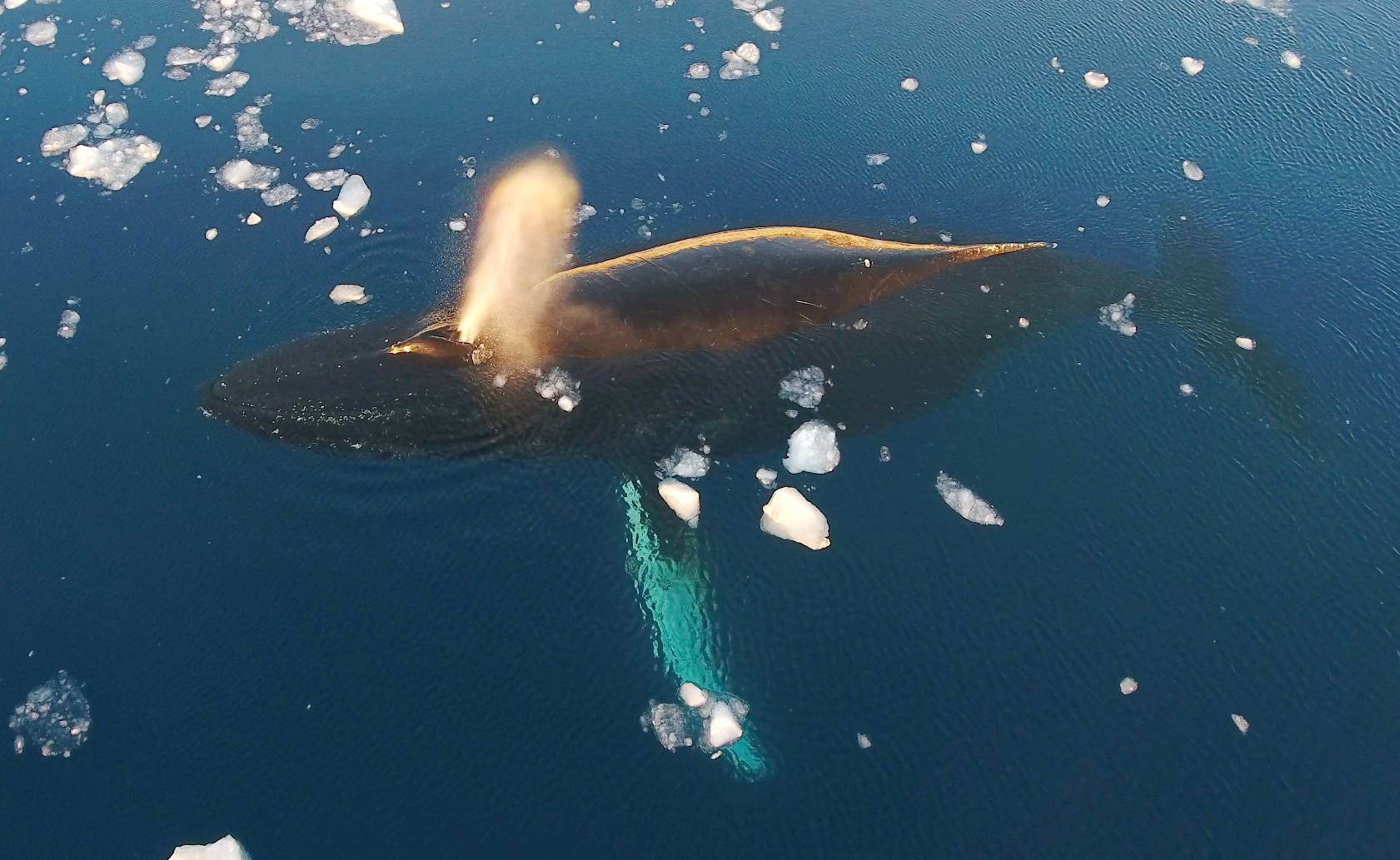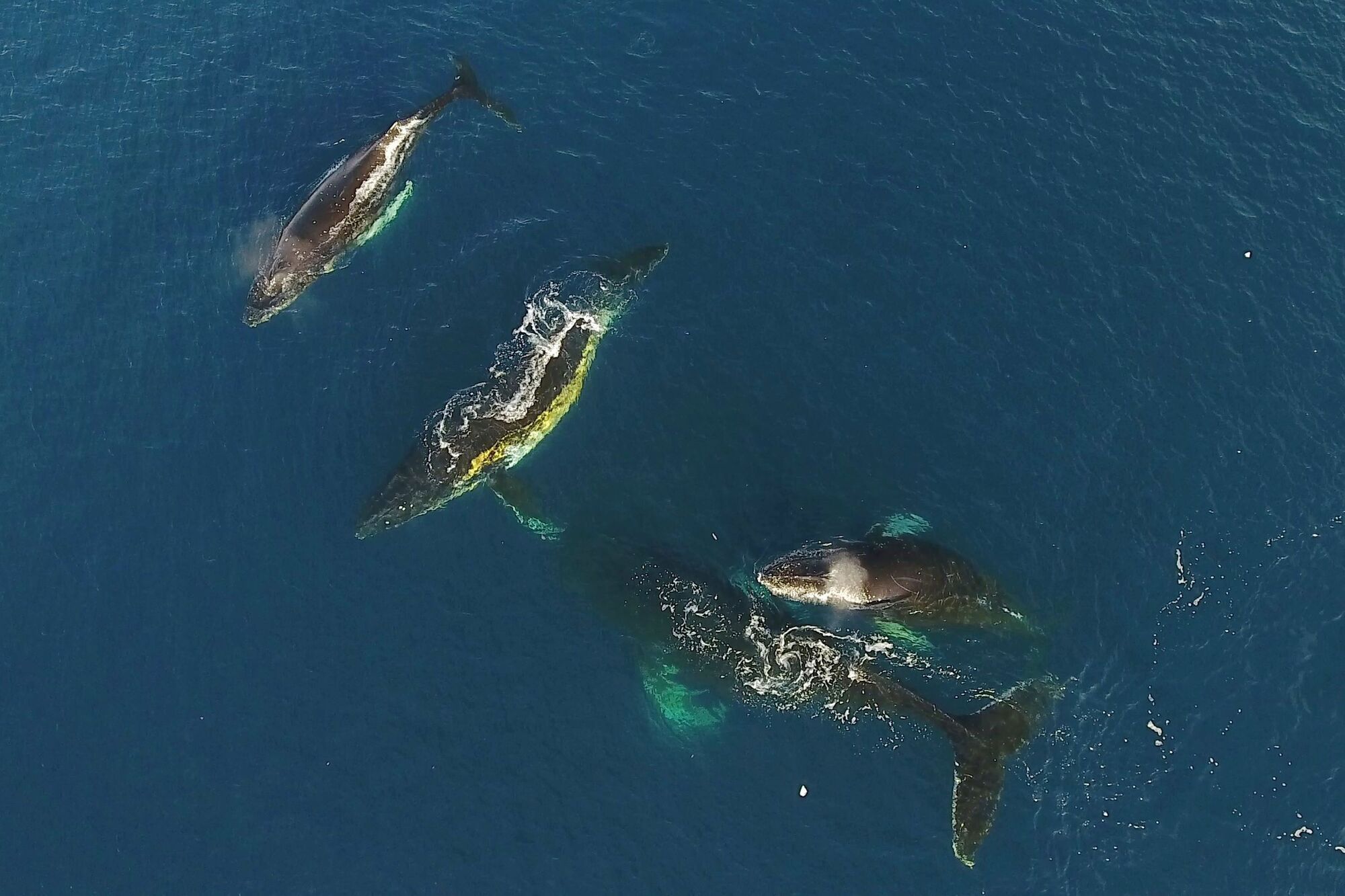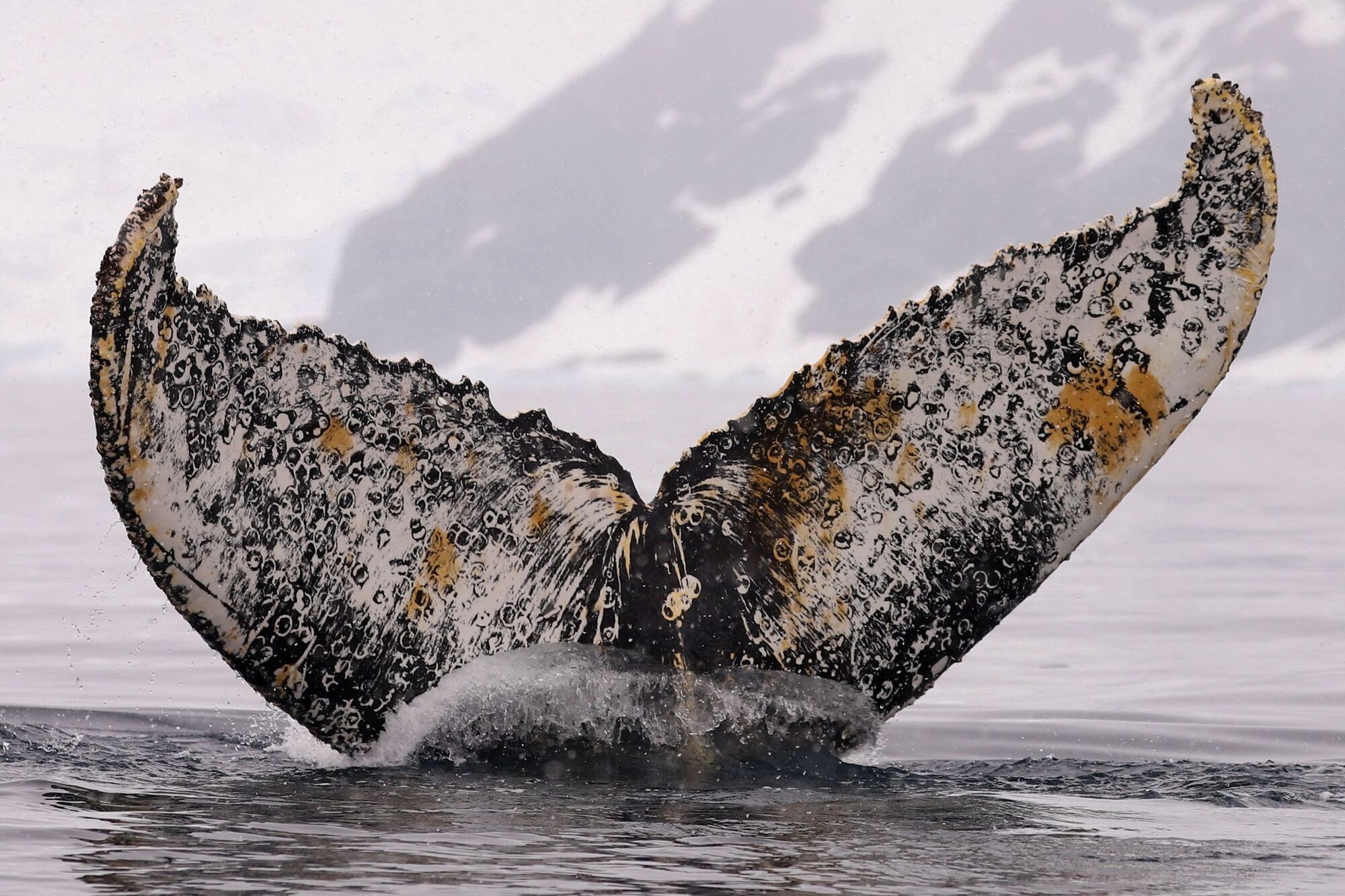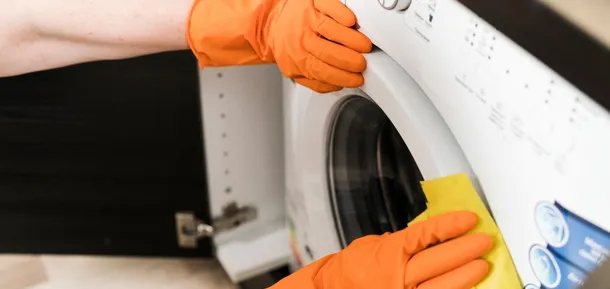News
The whale made fountains and turned upside down: it played a fascinating game with Ukrainian polar explorers. Video
During a sea voyage, Ukrainian scientists from the "Akademik Vernadsky" Antarctic station saw a humpback whale swimming nearby. They sailed closer to conduct research.
While the experts were making photo identification and taking skin and blubber samples for analysis, the humpback became very interested in the Ukrainian polar explorers' boat. The video posted on the National Antarctic Science Center's Facebook page shows that the whale wanted to play with the researchers, as it made fountains and turned over belly-up.
According to the Ukrainian scientists, while the measurements were going on, the whale became very interested in the boat and started swimming under and around it. This game lasted about 15 minutes.
"The humpback made fountains, rounded its back, showed its tail, and at one point even turned its belly up and began to clap its pectoral fins, which is not often seen," the biologists wrote in a post.
During this mischief, the whale lightly touched the boat with the polar explorers with one fin, which cheered them up. But then it politely swam away, the researchers said.
Biologists emphasize that humpback whales usually do not pose a threat to people in boats: they behave cautiously and not aggressively. However, if the animal's interest becomes obsessive and its actions become dangerous, the polar explorers stop observing and slowly move away so as not to hit the animal with the engine.
"This whale is twice as long as our boat. Calculations based on the drone video showed that its length is 9.6 meters. It is still a young animal because adult humpbacks are 13-15 meters long," said the "Vernadsky" polar explorers.
During this meeting, the biologist of the 29th UAE Svitozar Davydenko managed to collect various information about the whale. In addition to determining the size, the scientist photographed the giant's tail fin: the pattern on it is unique in humpbacks, like a human fingerprint, the biologist noted.
Now this whale will be included in the international identification database, and when it is sighted again, researchers will be able to compare how it has changed over time.
Thanks to such research, scientists receive valuable information about the success of reproduction of the largest animals on the planet, the availability of their food supply, and their migration, scientists say.
Only verified information is available on the OBOZ.UA Telegram channel and Viber. Do not fall for fakes!


